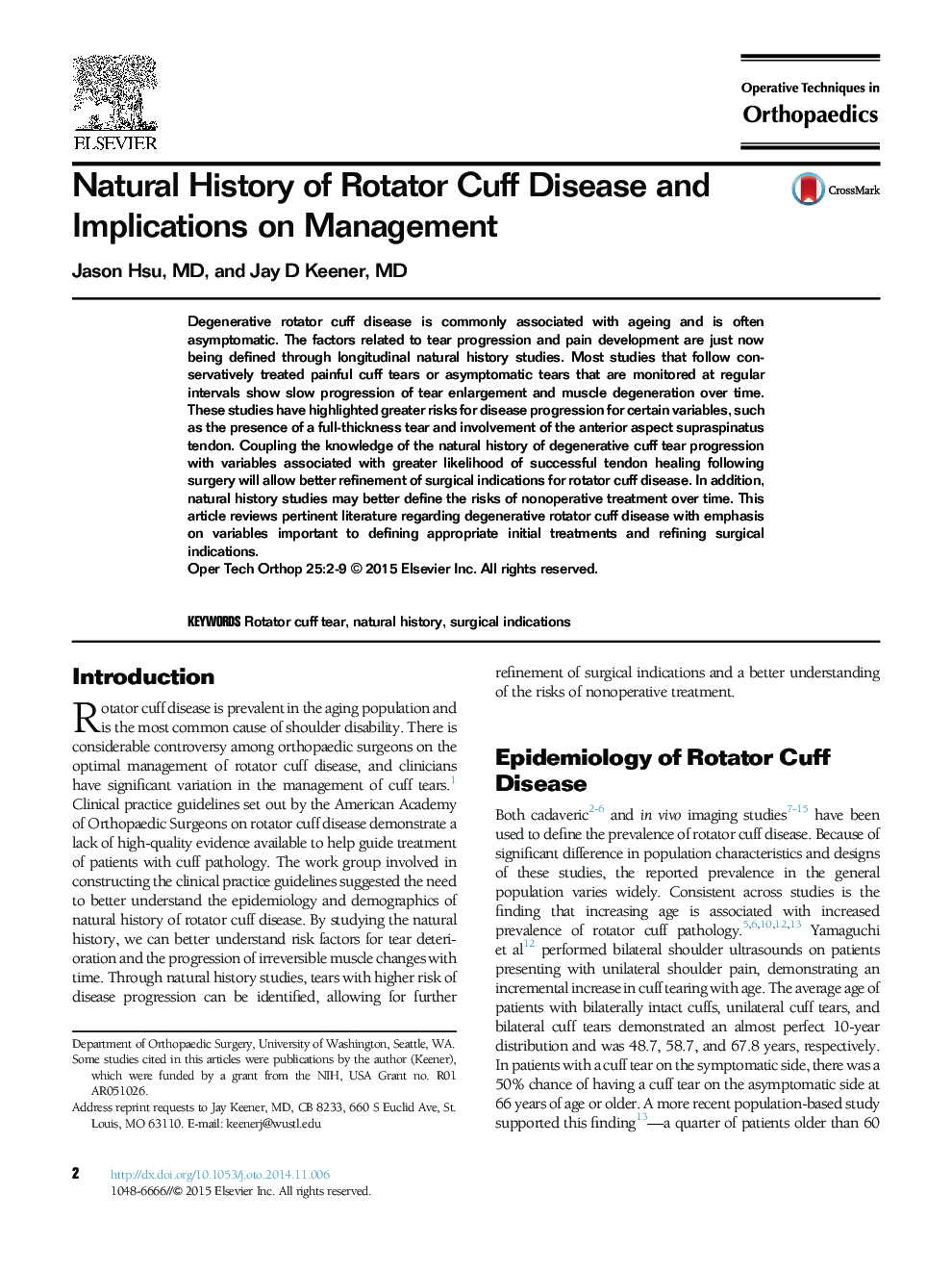| Article ID | Journal | Published Year | Pages | File Type |
|---|---|---|---|---|
| 4078815 | Operative Techniques in Orthopaedics | 2015 | 8 Pages |
Degenerative rotator cuff disease is commonly associated with ageing and is often asymptomatic. The factors related to tear progression and pain development are just now being defined through longitudinal natural history studies. Most studies that follow conservatively treated painful cuff tears or asymptomatic tears that are monitored at regular intervals show slow progression of tear enlargement and muscle degeneration over time. These studies have highlighted greater risks for disease progression for certain variables, such as the presence of a full-thickness tear and involvement of the anterior aspect supraspinatus tendon. Coupling the knowledge of the natural history of degenerative cuff tear progression with variables associated with greater likelihood of successful tendon healing following surgery will allow better refinement of surgical indications for rotator cuff disease. In addition, natural history studies may better define the risks of nonoperative treatment over time. This article reviews pertinent literature regarding degenerative rotator cuff disease with emphasis on variables important to defining appropriate initial treatments and refining surgical indications.
